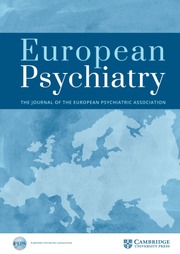No CrossRef data available.
Article contents
1516 – Effect Of Four Weeks Of Rtms On Brain Activity In Obsessive-compulsive Disorders During An Flanker Task: a Randomized Double Blind Study
Published online by Cambridge University Press: 15 April 2020
Abstract
Currently, 25-30% of Obsessive-compulsive disorder (OCD) patients are considered to be resistant to conventional therapies (cognitive-behavioral therapy and medications including selective inhibitors of reuptake of serotonin and clomipramine). Among alternative therapeutic strategies for theses refractory patients, repetitive Transcranial Magnetic Stimulation (rTMS) has been proposed (Greenberg et al., 1997). Few regions were choice for OCD patients and one of them could be a promising target: the Supplementary Motor Area (SMA). The aim of this project focuses on evaluate the SMA as a promising region to treat OCD patients. Forty patients were include in this double blind study, each received 20 session of rTMS (1 session / day) for 4 weeks with active or sham coil. rTMS parameters consisted of 1500 pulses/d, at 1 Hz, 5 trains of 5 min with an interval inter- stimulus of 2 min and 100% of motor threshold. To localize the SMA, neuronavigation was based on anatomical Magnetic Resonance Imaging (MRI) using Brainsight software. The therapeutic effect of rTMS will be assessed through a psychological evaluation and a task performed in functional MRI, before and after therapeutic: The Eriksen’s task. Its objective is to evaluate cerebral metabolism’s modifications during a simple task likely to recruit the error detection system implicating the Anterior Cingulate Cortex without inducing obsessive-compulsive symptoms. This modification were correlated with clinical and cognitive assessment and behavioral results of the Eriksen task
Information
- Type
- Abstract
- Information
- European Psychiatry , Volume 28 , Issue S1: Abstracts of the 21th European Congress of Psychiatry , 2013 , 28-E821
- Copyright
- Copyright © European Psychiatric Association 2013


Comments
No Comments have been published for this article.